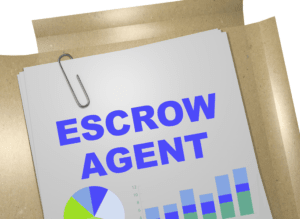
This jumps to over 70% of farms and ranches where the principal operator is primarily a farmer or rancher, rather than also working an off-farm job. If the deduction were to expire virtual accountant at the end of 2025, a farmer’s average tax liability would increase by $2,464, a 9% increase over their tax bill with the deduction. Large farms would have the smallest percentage change in their tax liability, an 8.5% increase, which is one-seventh that of very large farms’ increase (less than $12,000 a year compared to a very large farm’s $87,000). Next is the wage and qualified property (WQP) restriction, aimed at businesses that receive income from largely tangible assets like real estate. It allows eligible business owners to deduct 20% of their qualified business income until their AGI hits the phaseout. Once it hits this phaseout, you get the lesser of 20% of business profits or 50% of all allocable w2 wages (unless you are an SSTB which we will talk about later).

About Form 8995-A, Qualified Business Income Deduction
When outside of the phase-in threshold, it is irrelevant whether a pass-through entity is a qualifying business of a specified service trade or business (SSTB). Within the phase-out range, qualifying businesses are partially limited by the W-2 wage limit, while SSTBs are limited first to a total phase-out range and then by the W-2 wage limit. If the taxpayer is above the lower threshold, the taxpayer’s QBID for each entity begins to be limited. In this case the allowed QBID from each entity is limited by the amount of the entity’s W-2 wages or a combination of W-2 wages and unadjusted basis of assets. A QBL is treated as a separate trade or business for the purpose of calculating combined QBID (described in step 3) in the following tax year, which reduces the amount of QBI allowed to be deducted.
The Final Word on the Qualified Business Income Deduction…
- If the taxpayer’s taxable income exceeds the phase-in range, no deduction is allowed with respect to any SSTB.
- This jumps to over 70% of farms and ranches where the principal operator is primarily a farmer or rancher, rather than also working an off-farm job.
- December rolls around and this is the perfect time to optimize QBID by running a bonus.
- QBI is the net amount of qualified income, gain, deduction, and loss from any qualified trade or business.
- Because the QBI deduction is determined after you calculate adjusted gross income, there are some potential strategies you could consider if your income exceeds the applicable threshold.
For eligible taxpayers with total taxable income exceeding the phaseout threshold, QBID may be limited by the amount of W-2 wages paid by the qualified trade or business and the UBIA of qualified property held by the trade or business. The second requirement to take the QBID is that the pass-through business must have qualified business income for the tax period. Pass-through entities include sole proprietorships, partnerships, S corporations, limited liability partnerships (LLPs), certain trusts and estates, and most limited liability companies (LLCs). A pass-through business is one where the company’s profits or losses are passed through to the individual owners, who are required to report income and pay taxes on that income at their personal tax rates.
- Use this worksheet to track utilization of your suspended losses/deductions attributable to QBI.
- For taxpayers whose taxable income is less than the phaseout threshold, the taxpayer’s share of QBI, W-2 wages, and UBIA of qualified property related to the SSTB may be limited.
- Taking the Sec. 199A deduction does not affect the taxpayer’s basis (outside adjusted basis or shareholder’s accumulated adjustment’s account) in the pass-through entity.
- For rows 1 through 8, enter suspended losses allocable to Non-QBI into the appropriate year row (for example, row 1, pre-2018; row 2, 2018; row 3, 2019, etc.).
- However, your total QBI deduction is limited to 20% of your taxable income, calculated before the QBI deduction, minus net capital gain (increased by any qualified dividends).
- This is why for many high profit businesses, S Corps start to become very advantageous.
- Calculating QBID begins with a separate determination of the QBI for each pass-through business that a taxpayer owns.
Income Limitations on the Qualified Business Income Deduction
In these occupations, the owner and employee themselves are considered the primary asset. The qualified business income (QBI) deduction is one of the best tax planning tools out there yet most business owners have never heard of it. The combined QBID allowed is less than the overall limitation, so it will not be reduced. James and Mary will be able to claim an $8,000 qualified business income deduction. Therefore, if a taxpayer has net capital gains, those gains may decrease his or her QBID. For this deduction, net capital gains are long-term gains and qualified dividends minus short-term losses.
When aggregating PBJ and Jelly Supply, the QBI deduction is subject to a new wage limit of $72,500. This amount exceeds the total aggregated qualified business income deduction of $41,000. Thus, the entirety of the $41,000 may be deducted, subject to the overall income limitation. Aggregation allows a taxpayer to combine multiple businesses and treat them as one business for the purposes of calculating the qualified business income trial balance deduction for each respective pass-through entity.
Repeat Step 4 through Step 6 and adjust, as necessary, for any prior year suspended losses allowed in column C, row 4, and each row thereafter, as applicable. If your 2024 taxable income before the QBI deduction is less than or equal to $383,900 if married filing jointly, and $191,950 for all others, your SSTB is treated as a qualified trade or business. The qualified business income deduction is for self-employed people and small-business owners. QBI is the net amount of the qualified items of income, gain, deduction, and loss with respect to the qualified trade(s) or business(es) of the taxpayer. QBI is determined for each qualified trade or business of the taxpayer. The most difficult use of the QBID occurs when an owner’s income falls between the lower and upper bounds of the deduction.
Defining Trade or Business Status

In these cases, the deduction may be reduced or qbid eliminated, especially for business owners in specified service trades. The QBI deduction is also limited based on wages paid by the business and the amount of qualified property, which means businesses with lower wages or capital investment may not be able to claim the full 20% deduction. Your QBI includes qualified items of income, gain, deduction, and loss from your trades or businesses that are effectively connected with the conduct of a trade or business in the United States. This includes qualified items from partnerships (other than PTPs), S corporations, sole proprietorships, and certain estates and trusts that are allowed in calculating your taxable income for the year. The amounts reported on your Schedule K-1 as “QBI/Qualified PTP Items Subject to Taxpayer-Specific Determinations” from a partnership, S corporation, estate, or trust aren’t automatically included in your QBI. To figure if the item of income, gain, deduction, or loss is included in QBI, you must look to how it’s reported on your federal income tax return.


Enter on line 1(c) the net QBI or (loss) for the trade, business, or aggregation reported in the corresponding row. For qualified business net (loss) carryforward from the prior year, see instructions for line 3. QBI includes the income, minus wage income, deductions, applicable gains and losses, for every eligible pass-through business that a taxpayer operates in the United States or Puerto Rico. Cooperatives operate under a unique structure where the deduction is either retained by the cooperative or passed through to members based on business conducted with or through the cooperative and used to offset the farmer’s tax liability. Under the Section 199A QBID, small business owners are eligible to deduct 20% of their QBI from their individual income – or 20% of their total ordinary taxable income if it is less than their QBI.

